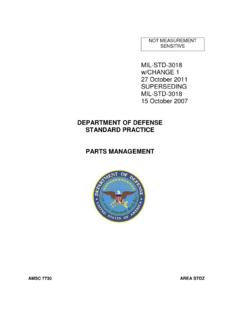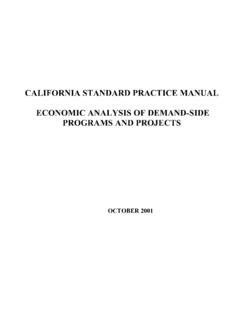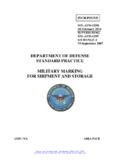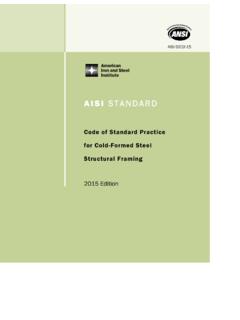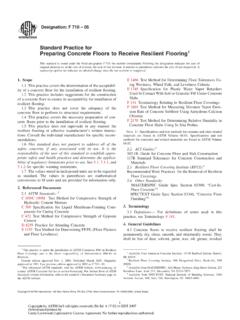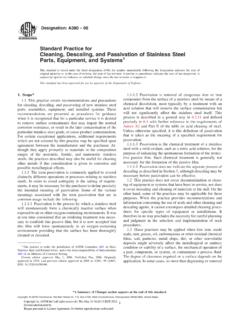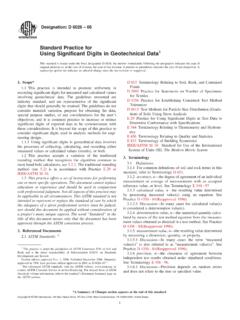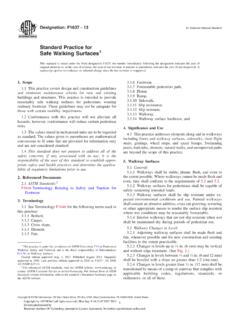Transcription of Standard Practice Procedure - Overlook Sys
1 Overlook SYSTEMS TECHNOLOGIES, INC. Standard Practice Procedure for Safeguarding Classified Information 25 March 2013 FOREWORD As stated in the Overlook Security Policy, dated 23 January 2013, Overlook Systems Technologies, Inc. has entered into a formal written agreement with the Department of Defense and has been granted a Government Facility Clearances (FCLs) in order to perform work on government contracts requiring access to classified information. The Overlook Headquarters Facility in Vienna, VA has been granted a Top Secret FCL, as has the Overlook Facility in Los Angeles, CA.
2 This agreement provides that the company, and all its employees, will follow the regulations and procedures established by the National Industrial Security Program Operating Manual (NISPOM) (DOD ). As required by the NISPOM, this Standard Practice Procedure (SPP) has been developed to provide detailed, company specific, amplification of NISPOM requirements to reasonably foreclose the possibility of loss or compromise of classified information. Failure to handle classified information properly can result in damage, in varying degrees, to the national security of the United States, including the potential for loss of life!
3 Additionally it can result in severe penalties under the Federal Espionage Laws and Criminal Statutes. Egregious violations or infractions could be considered justification for revocation of individual security clearances and, possibly, suspension or revocation of the company s facility clearance. Therefore, it is incumbent on all Overlook employees to read, understand, and adhere to the provisions of this SPP. _(file copy signed)_____ Ronald T. Hansson Principal Corporate Security Officer Table of Contents Chapter 1.
4 General Provisions and Requirements Section 1. Introduction 1-100. Purpose 1-102. Scope 1-103. Waivers Section 2. General Requirements 1-200. Facility Security Officer 1-201. Standard Practice Procedure (SPP) 1-202. Security Reviews 1-203. Hotlines 1-204. Cooperation with Federal Agencies and their Officially Credentialed Reps Section 3. Reporting Requirements 1-300. General 1-301. FSO Responsibilities Chapter 2. Security Clearances Section 1. Facility Clearance 2-100.
5 General 2-101. PCLs Required in Connection with FCL Section 2. Personnel Clearances 2-200. General 2-201. Investigative Requirements 2-202. Pre-employment Clearance Actions 2-203. Verification of Citizenship 2-204. JPAS/JCAVS 2-205. Representative of a Foreign Interest (RFI) 2-206. Interim Clearances 2-207. Consultants 2-208. Converting and Reinstating Security Clearances 2-209. Clearance Terminations 2-210. Records Maintenance 2-211. Annual Personnel Clearance Review Section 3. Foreign Ownership, Control or Influence (FOCI) 2-300. General Chapter 3. Security Education,Training and Briefings Section 1.
6 Security Training and Briefings 3-100. General. 3-101. FSO Training 3-102. Initial Security Briefings 3-103. Refresher Training 3-104. Training Records 3-105. Debriefings 3-106. Foreign Travel and Travel Threat Briefings 3-107. Derivative Classification Training Chapter 4. Classification and Marking Section 1. Classification 4-100. General 4-101. Derivative Classification Responsibilities 4-102. Security Classification Guidance 4-103. Challenges to Classification 4-104. IR&D and other Contractor Developed Information 4-105. Classified Information Appearing in Public Media 4-106.
7 Declassification of Classified Information. Section 2. Marking Requirements 4-200. General 4-201. Training Chapter 5. Safeguarding Classified Information Section 1. General Safeguarding Requirements 5-100. General 5-101. Oral Discussions 5-102. End of Day Security Checks 5-103. Perimeter Controls 5-104. Emergency procedures 5-105. Annual Classified Holdings Review Section 2. Control and Accountability 5-100. General 5-201. Policy 5-202. External Receipt and Dispatch 5-203. Accountability for TOP SECRET 5-204. Receiving Classified Material 5-205. Generation of Classified Material Section 3.
8 Storage and Storage Equipment 5-300. General 5-301. GSA Storage Equipment 5-302. Top Secret Storage 5-303. Secret Storage 5-304. Restricted Areas 5-305. Closed Areas 5-306. Supplemental Protection 5-307. Protection of Combinations to Security Containers and Closed Areas 5-308. Changing Combinations 5-309. Container Repair 5-310. Supplanting and Automated Access Control Systems 5-311. Mechanical Access Control Devices Section 4. Transmission 5-400. General 5-401. Preparation and Receipting 5-402. TOP SECRET Transmission 5-403. SECRET and CONFIDENTIAL Transmission. 5-404. Transmission outside , Puerto Rico, or a Possession or Territory 5-405.
9 Addressing Classified Material 5-406. Large Packages or Equipment Requiring Shipment by Commercial Carrier 5-407. Use of Commercial Passenger Aircraft for Hand-carrying Classified 5-408. Local or Metro Courier Authorizations Section 5. Disclosure 5-500. General 5-501. Disclosure Categories Section 6. Reproduction 5-600. General Section 7. Disposition and Retention 5-700. General 5-701. Destruction 5-702. Destruction Records 5-703. Disposition of Classified Material Not Received on Specific Contract Section 8. Construction Requirements 5-800. General Section 9. Intrusion Detection Systems 5-900.
10 General. Chapter 6. Visits and Meetings Section 1. Visits 6-100. General 6-101. Notification 6-102. Need-to-Know Determination 6-103. Visitor Control and Records. Section 2. Meetings 6-200. General 6-201. Location and Security Arrangements for Meetings Chapter 7. Subcontracting Section 1. Prime Contractor Responsibilities 7-100. General Chapter 8. Automated Information Systems Security Section 1. Responsibilities 8-100. General 8-101. Responsibilities 8-102. Requirements and procedures . Chapter 9. Special Requirements Section 1. Restricted Data and Formerly Restricted Data 9-100.


